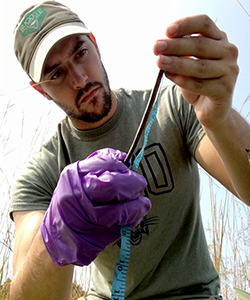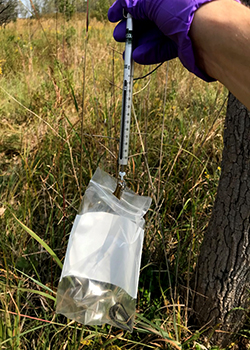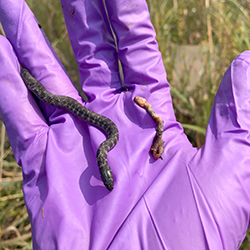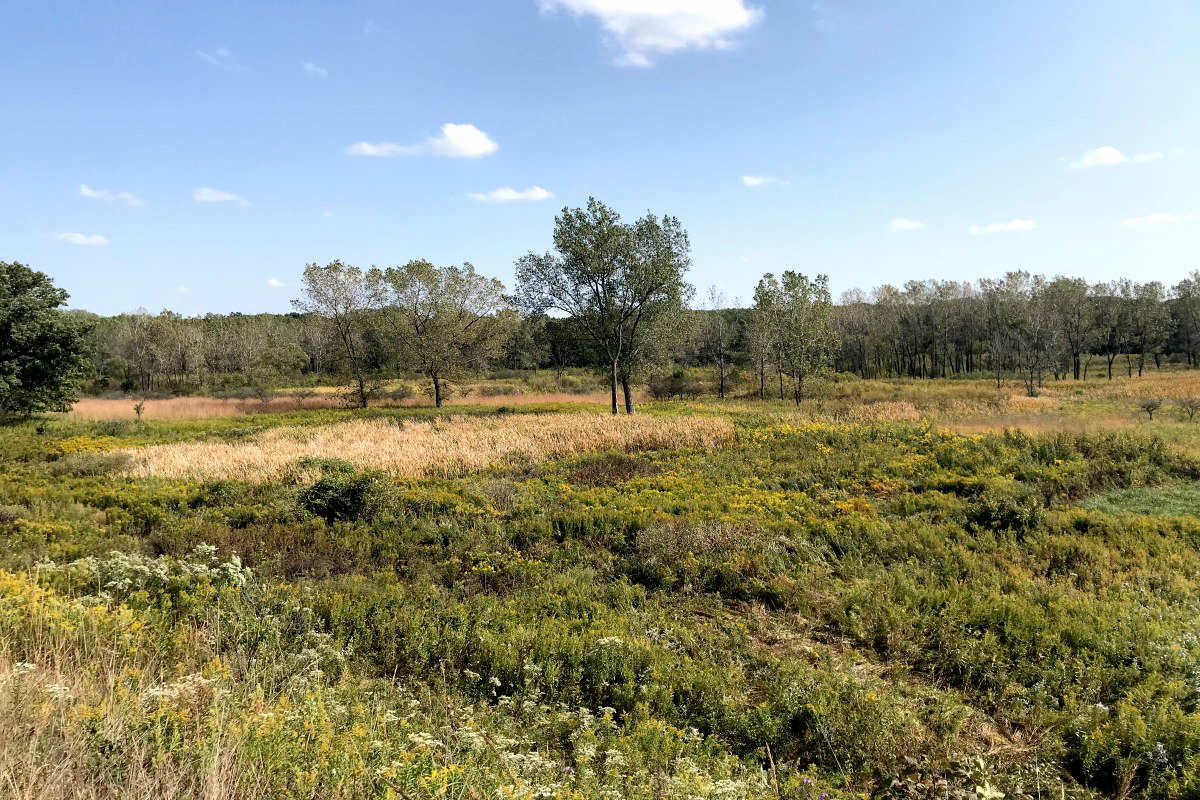
A protected prairie wetland near Beecher, Illinois.
Photo by Tyler Stewart
NEAR BEECHER, Ill. – To the naked eye, it might appear as though I'm standing in a prairie oasis. Pockets of bright yellow goldenrod bring vibrancy to the sea of towering grasses. There's not a soul in sight to spoil the serenity. A lone red-tailed hawk scouring the landscape from the top of a dead oak tree is my only companion. It's not hard to imagine the entire region looking like this prior to European settlement, expanding miles and miles without interruption.
A truck driver lays on his horn and my wandering mind is sucked back to reality. I become cognizant of the rumbling traffic that surrounds me and I am reminded that the tree line in the distance only gives the illusion of solitude. This isn't the pristine prairie it appears to be at a glance; this 40-acre prairie is only a stone's throw away from Chicago and confined by a bustling four-lane highway.
I made the two-hour drive from Champaign to this tiny, fragmented prairie to search for an uncommon snake.
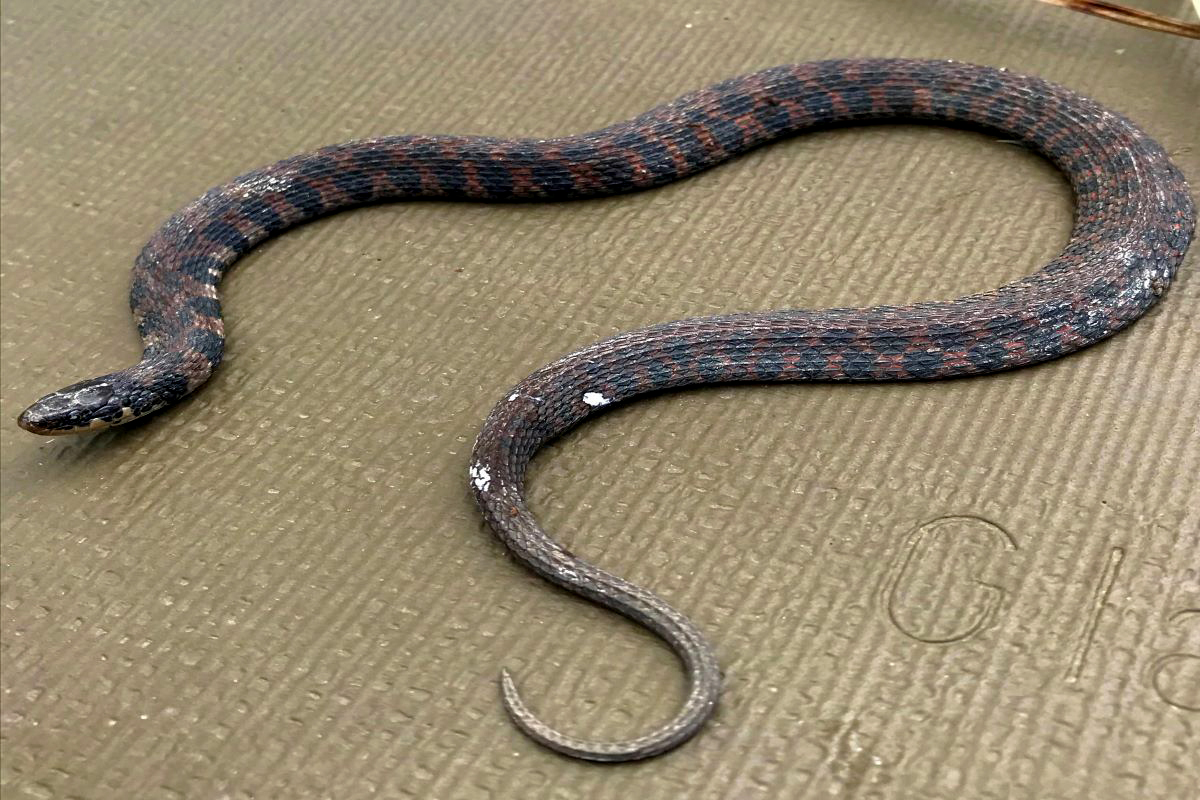
Kirtland's snakes are difficult to find and study because they live in burrows in wetlands.
Photo by Tyler Stewart
Kirtland's snakes were once widespread in Illinois, but now are listed as a threatened species here. With more than 99% of Illinois' natural prairies lost to agriculture and urban development, these snakes must battle just to maintain their current populations.
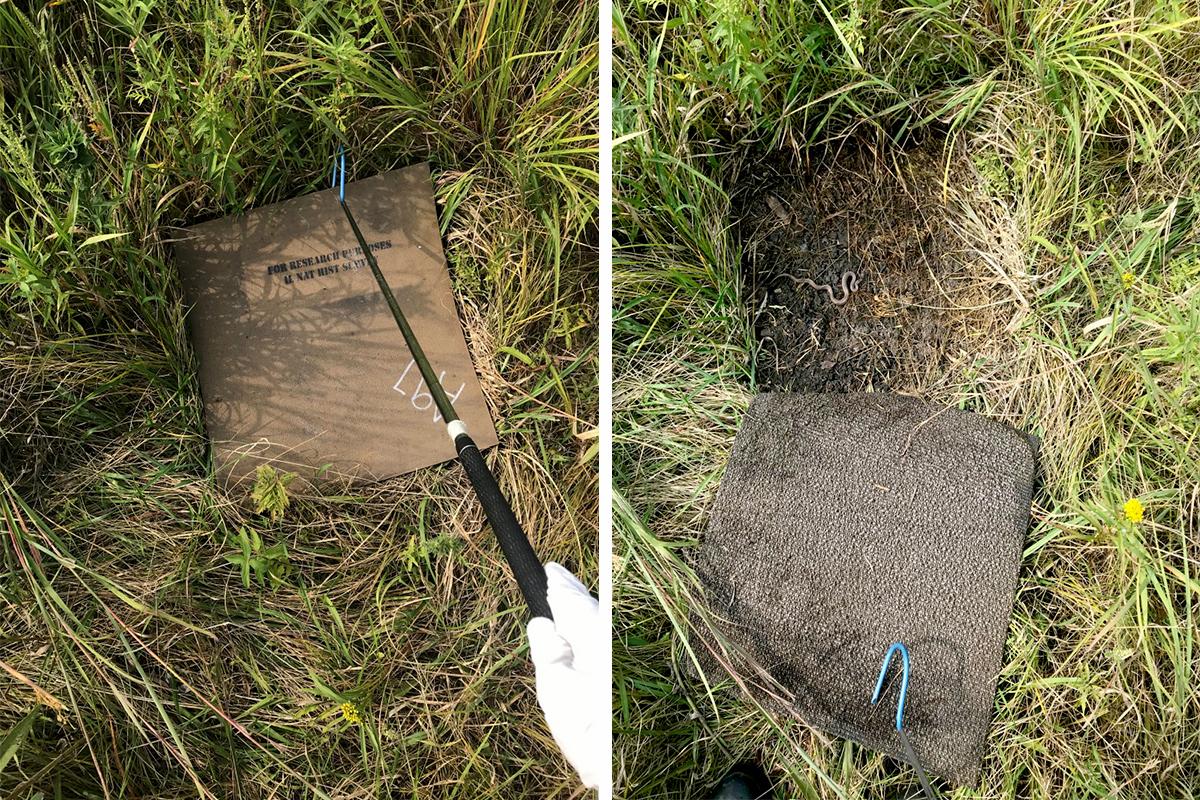
Stewart uses artificial covers to lure the snakes to shelter. After searching under dozens of covers, he finally discovers a Kirtland's snake.
Photos by Tyler Stewart
With rows of dark blotches on their backs and bright-red bellies, Kirtland's snakes are easy to identify. They are small; most won't grow longer than 18 inches in their lifetime. They prefer prairies such as this one, particularly because such settings are susceptible to seasonal flooding, which creates habitat for burrowing crayfish. Kirtland's snakes hibernate in these burrows in the winter and take refuge there for the rest of the year. We call this burrowing behavior "fossorial."
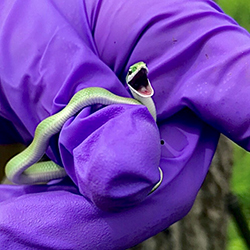
Finding this juvenile smooth green snake gives Stewart hope that he will also find Kirtland's snakes.
Photo by Tyler Stewart
Their fossorial nature makes Kirtland's snakes incredibly tricky to find and study. I haven't seen one at this site in nearly seven weeks. As colder temperatures become more frequent, my window for seeing another one before they retreat to their hibernacula for the winter is quickly closing.
My surveys involve checking beneath 200 artificial cover objects placed across the prairie in an array. When the snakes are still above ground, they will shelter under these objects to stay warm and keep out of sight of predators.
I gradually wrestle my way through the near-impenetrable wall of grass that rises a few feet above my head. Nearly halfway through my survey, I flip a cover object to reveal a feisty juvenile smooth green snake. My hopes for finding a Kirtland's snake are rising because I know smooth green snakes are just as hard to come by.
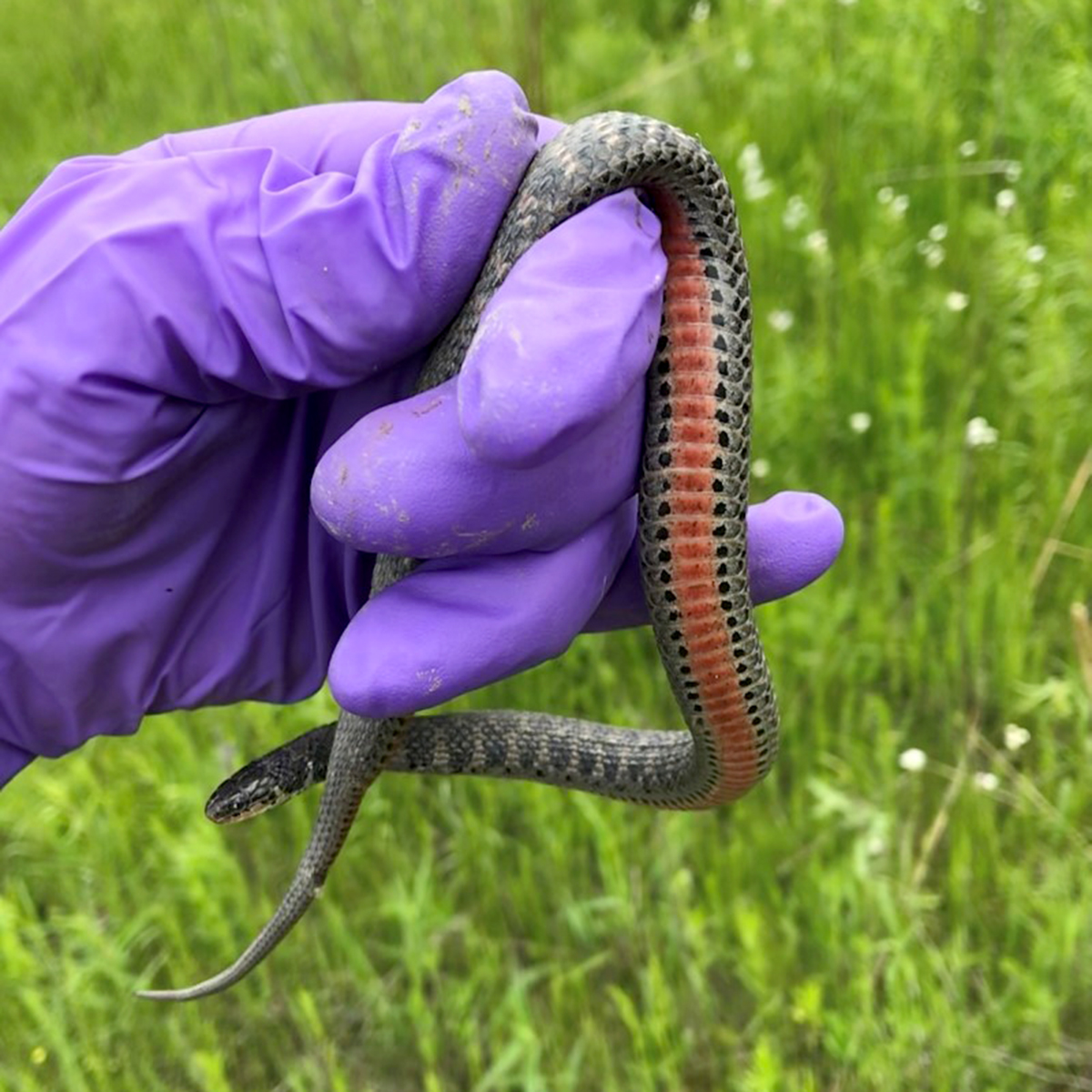
Kirtland's snakes are small, reaching an adult length of about 18 inches. This juvenile female is about half that length.
Photo by Tyler Stewart
I put the green snake back in its hiding place and continue with the survey. Sure enough, a few more flips yield a Kirtland's snake. This female is also a juvenile; she was likely born at the end of summer. I weigh and measure her and implant an identification tag just beneath her skin. She is 4 grams and nearly 8 inches long. By the time she is fully mature, she will be twice as long and weigh more than 20 grams.
Before we part ways, the snake decides to regurgitate her last meal: an earthworm. I imagine she has spewed up her lunch on me as payback for all the poking and prodding I've done to her. I take no offense. I hope to see her again in the years to come.
With the data collected through this study, my colleagues and I hope to determine whether the population at this site is healthy. To date, there has not been enough information about this species to estimate abundance or demographics of any population of Kirtland's snakes.
As recently as 2017, Kirtland's snakes were up for federal review as a potential endangered species. They were ultimately denied federal protection on the basis of insufficient data. I hope to do my part to close this gap in knowledge and use the information I gather to inform future management decisions.

